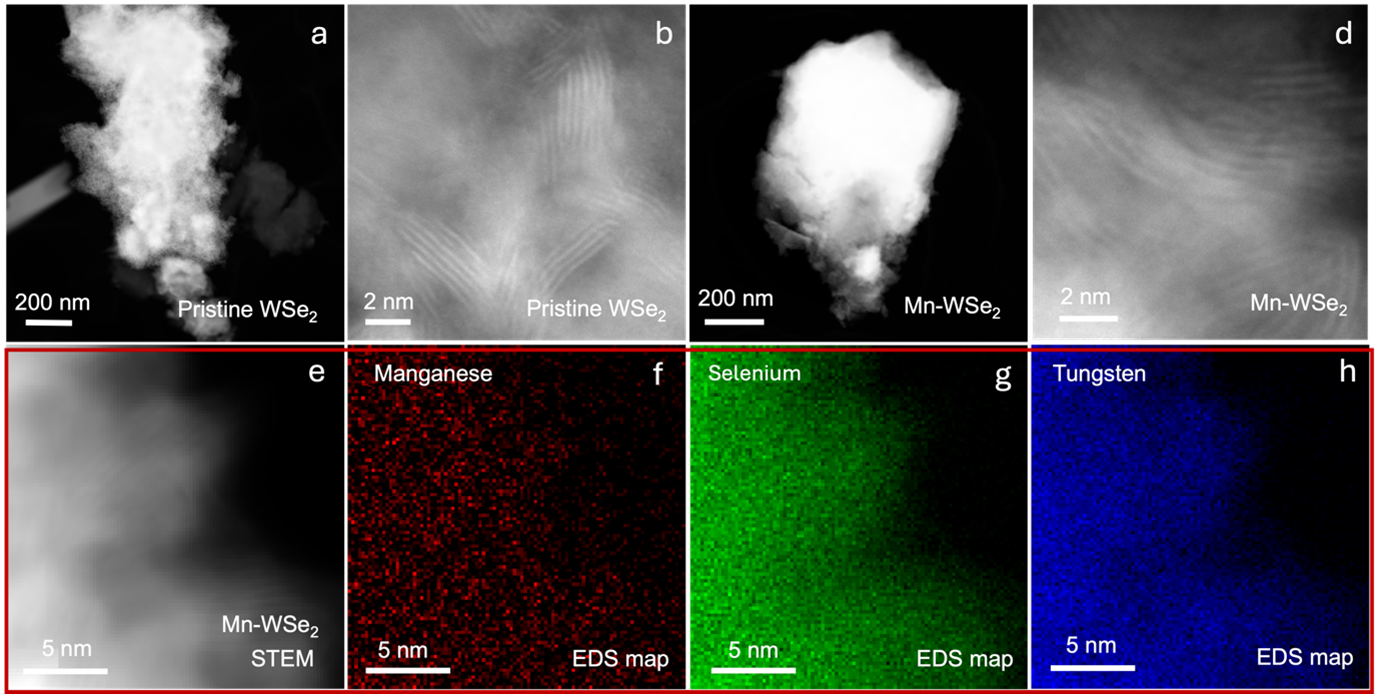
Mn-doped WSe2 as an efficient electrocatalyst for renewable energy production
The ongoing energy crisis has made it imperative to develop low-cost, easily fabricated, yet efficient materials. Among transition metal dichalcogenides and other 2D materials, tungsten diselenide (WSe2) shows great promise but remains understudied. With the support of an ARTEMI user access project, scientists from University of Chemistry and Technology Prague in Czech Republic worked with the Chalmers node in ARTEMI, and investigated the structures of doped WSe2, which was recently successfully developed, at the nanometer and atomic scales. The results are recently published in Nanoscale, 2025, 17, 947-954 (DOI: 10.1039/D4NR04348K).
In this work, WSe2 doped with Mn was fabricated using a simple hydrothermal method. Doping of WSe2 is believed to change its crystal and electronic structures, enhancing its electrical conductivity and charge transfer properties. The resulting Mn-WSe2 exhibited excellent electrocatalytic activity for hydrogen evolution reaction and high discharge capacity as an anode material for lithium-ion batteries. High angle annular dark field (HAADF) scanning transmission electron microscopy (STEM) imaging showed that the pristine and Mn-doped WSe2 have similar flake size distribution at the nanometer scale. The flakes consist of randomly distributed WSe2 nanosheets with the dimension of a few nanometers. The stacking of the atomic basal planes in the nanosheets in Mn-WSe2 is more distorted compared to the pristine WSe2. STEM-energy dispersive X-ray spectroscopy (EDS) mapping reveals a homogeneous distribution of Mn dopants at the atomic scale. Quantitative EDS analysis shows that the doping concentration of Mn is about 4 at.%.
High resolution STEM investigations provided important insights as to why the Mn-doped WSe2 possesses promising properties to be used for hydrogen producton and Li-ion batteriers.
This work was partly performed at the Chalmers node of ARTEMI via a user access project by Antonia Kagkoura, Shuangying Wei, Filipa M. Oliveira, Jan Luxa and Zdeněk Sofer from University of Chemistry and Technology Prague, Czech Republic, together with Lunjie Zeng and Eva Olsson from Chalmers University of Technology.
